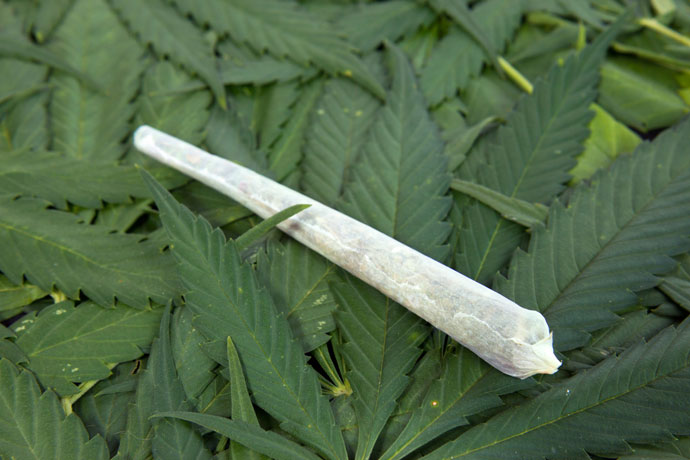Big Tobacco Has Been Hoping To Become Big Marijuana Since 1970
Ah, the 1970s. Many of us weren’t around to remember the decade, but we know it was a time when Cheech and Chong went Up in Smoke, and Nancy Reagan had yet to teach America’s youth to “Just say no.” After the tumultuous, drug-hazed 1960s’ time of peace, love and war, many felt marijuana would soon be legalized. After all, compared to the hallucinations produced by the hippy-popular LSD and ‘shrooms, marijuana was just, after all, a… weed. They may have been several (at least) decades off in their suppositions—thanks, in part to President Nixon declaring the “war on drugs” in 1971—but records indicate it wasn’t only stoners looking for a legal high. Big Tobacco, in fact, was researching ways to produce and market cannabis products as early as 1970, according to recently uncovered documents.
Tobacco companies may have been denying their interest in weed for years, but more than 80 million pages of internal company documents obtained by the University of California, San Francisco’s Legacy Tobacco Documents Library do much to prove otherwise. At least three companies—Philip Morris, British American Tobacco and RJ Reynolds—have considered manufacturing cannabis cigarettes. Why would they choose to expand a market that already makes them millions? Money, of course.
From all I can gather from the literature, from the press, and just living among young people, I can predict that marihuana smoking will have grown to immense proportions within a decade and will probably be legalized,” Alfred Berger, University of Virginia professor and supervisor of a Phillip Morris program for organic chemistry’s relationship with nicotine, wrote to PM Research Laboratories’ Robert Ikeda. “The company that will bring out the first marihuana smoking devices, be it a cigarette or some other form, will capture the market and be in a better position than its competitors to satisfy the legal public demand for such products. I want to suggest, therefore, that you institute immediately a research program on all phases of marijuana.”
Berger’s note wasn’t the end of Phillip Morris’ interest in marketing marijuana, either. According to a report published by Milbank Quarterly, in 1970 an unsigned memorandum was distributed to the company’s upper management. In it, the company explained why it modifies its product line to fit with changing social norms:
We are in the business of relaxing people who are tense and providing a pick up for people who are bored and depressed,” the memo explained. “The human needs that our product fills will not go away. Thus, the only real threat to our business is that society will find other means of satisfying these needs…”
The investigations didn’t stop in the 1970s, either. Among the millions of documents is one describing an RJ Reynolds’ project conducted as recent as 1992. The company’s research and development office in Germany began comparing the toxicology and pharmacology of nicotine and cannabinol, the psychoactive component of much marijuana.
Regardless which document is examined, the moral of the story is simple: Big Tobacco wants to be prepared to sell weed as soon as it’s a legal market. The concept is summed up perfectly in the following memo from British American Tobacco’s advisor of technical research, Charles Ellis:
The starting point must be to learn how to produce in quantity cigarettes loaded uniformly with a known amount of either ground cannabis or dried and cut cannabis rag.”
So what do you think? Provided that the federal government ever legalizes pot, would you buy yours in tidy square packages – at likely a lesser price – from Marlboro, Camel or Winston? Or would you stick with quality and buy your herb in its purest form from a local shop? One thing’s for sure, if they decided they wanted it done, the Big Tobacco companies have a lot more powerful lobbyists than… say… NORML.










































